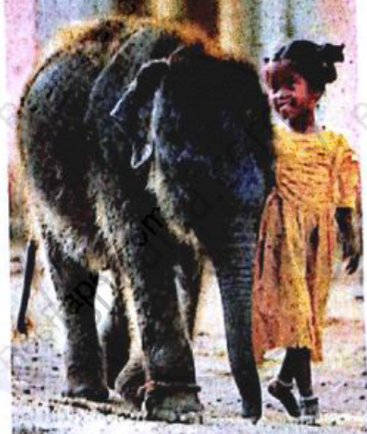Advertisements
Advertisements
प्रश्न
What is the implied meaning of “his bars of rage” in the poem “I Know Why the Caged Bird Sings”?
उत्तर
The poet is creating the image of a bird held in a barred cage which is in opposition to a bird flying free that she describes in the first stanza. The bird is “stalking” around in that cage which connotes anger and frustration. It is blinded by that “rage” and understands that there is no escape from its bars of incarceration. The bird cannot visualize what the free bird can because it is caged with pent up anger. The “bars of rage” are a metaphor for the feelings of people who are bound by slavery, ignorance, and prejudice. Ms. Angelou goes on to explain that the bird cannot obtain its freedom but it chooses to express itself joyously implying that although it maybe be angry and unable to break those bonds, it will not be silenced.
APPEARS IN
संबंधित प्रश्न
Fill in the blank with the suitable word.
He agreed to carry _____________ the manager’s orders.
What is the climax of Ray Bradbury’s “All Summer in a Day?”
Anil is too fast a runner not to come first in the race. (Begin: Anil is so………….)
Study the picture given below. Write a story or a description or an account of what it suggests to you. Your composition may be about the subject of the picture or you may take suggestions from it; however, there must be a clear connection between the picture and your composition.

Multiple Choice Question:
What lesson did they possibly learn?
Imagine your friend is a table tennis champion who has won the semi-final in the inter-collegiate championship. Due to overconfidence, she neither practices nor does she take her opponent seriously. This may result in her losing the final. Suggest some ways to make her aware of the importance of hard work and regular practice.
‘..... and that’s how I realized that courage and hope can help me overcome any major mishap/problem in life.’ Write an episode/experience from your own life that leads to the above conclusion.
What are the occasions when photographs are taken?
| e.g. birthday parties | |

Summarizing is to briefly sum up the various points from the notes made from the below passage.
The Sherpas were nomadic people who first migrated from Tibet approximately 600 years ago, through the Nangpa La pass and settled in the Solukhumbu District, Nepal. These nomadic people then gradually moved westward along salt trade routes. During 14th century, Sherpa ancestors migrated from Kham. The group of people from the Kham region, east of Tibet, was called “Shyar Khamba”. The inhabitants of Shyar Khamba, were called Sherpa. Sherpa migrants travelled through Ü and Tsang, before crossing the Himalayas. According to Sherpa oral history, four groups migrated out of Solukhumbu at different times, giving rise to the four fundamental Sherpa clans: Minyagpa, Thimmi, Sertawa and Chawa. These four groups have since split into the more than 20 different clans that exist today.
Sherpas had little contact with the world beyond the mountains and they spoke their own language. AngDawa, a 76-year-old former mountaineer recalled “My first expedition was to Makalu [the world’s fifth highest mountain] with Sir Edmund Hillary’’. We were not allowed to go to the top. We wore leather boots that got really heavy when wet, and we only got a little salary, but we danced the Sherpa dance, and we were able to buy firewood and make campfires, and we spent a lot of the time dancing and singing and drinking. Today Sherpas get good pay and good equipment, but they don’t have good entertainment. My one regret is that I never got to the top of Everest. I got to the South Summit, but I never got a chance to go for the top.
The transformation began when the Sherpa Tenzing Norgay and the New Zealander Edmund Hillary scaled Everest in 1953. Edmund Hillary took efforts to build schools and health clinics to raise the living standards of the Sherpas. Thus life in Khumbu improved due to the efforts taken by Edmund Hillary and hence he was known as ‘Sherpa King’.
Sherpas working on the Everest generally tend to perish one by one, casualties of crevasse falls, avalanches, and altitude sickness. Some have simply disappeared on the mountain, never to be seen again. Apart from the bad seasons in 1922, 1970 and 2014 they do not die en masse. Sherpas carry the heaviest loads and pay the highest prices on the world’s tallest mountain. In some ways, Sherpas have benefited from the commercialization of the Everest more than any group, earning income from thousands of climbers and trekkers drawn to the mountain. While interest in climbing Everest grew gradually over the decades after the first ascent, it wasn’t until the 1990s that the economic motives of commercial guiding on Everest began. This leads to eclipse the amateur impetus of traditional mountaineering. Climbers looked after each other for the love of adventure and “the brotherhood of the rope” now are tending to mountain businesses. Sherpas have taken up jobs as guides to look after clients for a salary. Commercial guiding agencies promised any reasonably fit person a shot at Everest.
When Luz Long said, 'something must be eating you' he meant that Jesse Owens must be ______.
